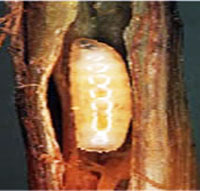Wheat bulb fly egg numbers highest in six years

Wheat bulb fly infestations are at their highest levels for six years, according to a HGCA survey.
“The results are the highest for a number of seasons, so growers must consider the risk in their region carefully, and what action to take,” said Vicky Foster, HGCA senior regional manager, particularly as it can lead to yield losses of up to 4t/ha.
A total of 35 fields – 20 in eastern England and 15 in northern England – considered at risk were sampled for the annual HGCA survey by ADAS.
Moderate, high or very high egg populations were found in 16 (80%) of the sampled fields in eastern England, with the highest risk fields following potatoes and sugar beet.
However, results were slightly better in northern England, where only one of the 15 farms fell into the very high risk category and six (40%) were deemed low risk.
Overall, 40% of the 35 fields sampled had egg populations above the high-risk 250/sq m threshold.
Compared with the long-term average of 23%, the latest samples revealed the highest egg numbers in six years – and the fourth highest since the study began in 1984.
Dr Foster said insecticidal seed treatments were worth considering for late-autumn crops in high-risk areas.
But she added: “The threshold is much lower for crops sown from November onwards, as they are most vulnerable to the wheat bulb fly’s destructive larvae come spring.”
All cereals, expect oats, can be attacked by wheat bulb and the pest is most common in the eastern counties, the East Midlands and north-east England.
Eggs are laid in the summer and the sites chosen by females for egg-laying vary from year to year. Bare soil following fallows, set-aside, early harvested crops or root crops are favoured egg-laying sites.
Larvae hatch between January and March and invade shoots, which eventually die back to show “deadheart” symptoms of damage.

